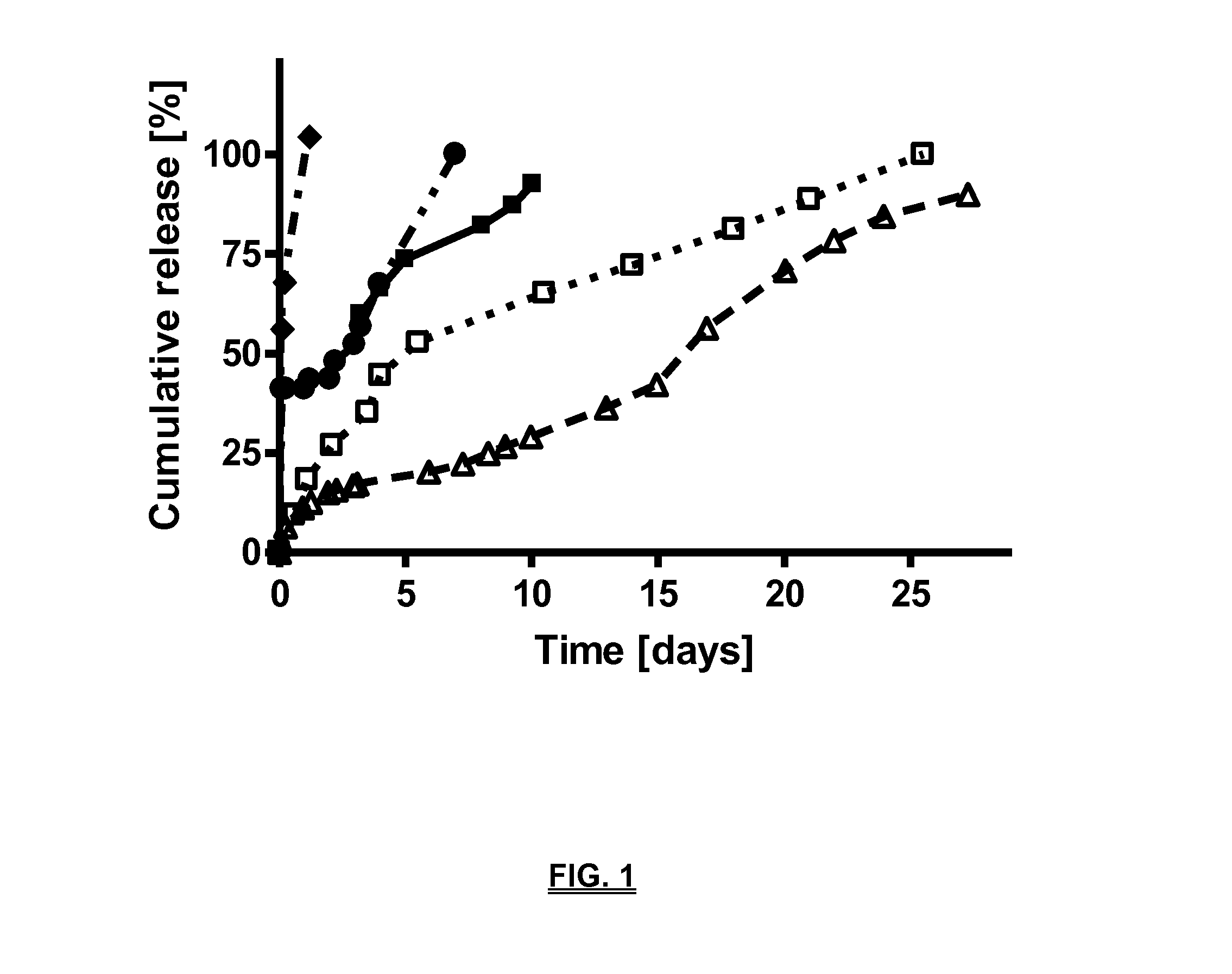Biodegradable compositions suitable for controlled release
a biodegradable composition and composition technology, applied in the field of compositions, can solve the problems of increasing the risk of infection, affecting the health of patients, and only being able to administer drugs to patients by injection
- Summary
- Abstract
- Description
- Claims
- Application Information
AI Technical Summary
Benefits of technology
Problems solved by technology
Method used
Image
Examples
example 1
Preparation of the Tri-Block Copolymer #33: Acylated (C2-Modified) PLCA-PEG-PLCA
[0130]Polyethyleneglycol (PEG 1500, 12.5 g, 8.3 mmol) and ca. 100 ml toluene were charged into a 250 ml three-neck round-bottom flask equipped with a magnetic stirring bar. Using a Dean-Stark device with a cooler on top, 40 ml of toluene was distilled off to remove water (from PEG) azeotropically by heating at 150° C. at atmospheric pressure (1 bar) under nitrogen.
[0131]After cooling down the solution to ca. 80-100° C., L-lactide (2.75 g, 19 mmol) and caprolactone (24.75 g, 217 mmol) were added. 40 ml of toluene was distilled off to dry the monomers by heating at 150° C. at atmospheric pressure. Ca. 20 ml of dry toluene was left in the flask for the polymerization.
[0132]After cooling down the mixture to ca. 80-100° C., tin(II) 2-ethylhexanoate (0.25 ml) was added through one of the necks.
[0133]Polymerization was carried out at 120° C. for 1 day under nitrogen atmosphere.
[0134]After cooling down to room t...
example 2
Preparation of the Tri-Block Copolymer #27
[0135]In a manner similar to example 1 an acylated PLCA-PEG-PLCA tri-block was synthesized having a PLCA / PEG ratio of 1.8 and a caprolactone / lactide weight ratio 9 / 1. The differences with example 1 were: different PLCA / PEG ratio and different caprolactone / lactide weight ratio.
example 3
Preparation of the Tri-Block Copolymer #17
[0136]In a manner similar to example 1 an acylated PLCA-PEG-PLCA tri-block was synthesized having a PLCA / PEG ratio of 1.8 and a caprolactone / lactide weight ratio 9 / 1. The difference with example 1 was: different PLCA / PEG ratio.
PUM
| Property | Measurement | Unit |
|---|---|---|
| Temperature | aaaaa | aaaaa |
| Temperature | aaaaa | aaaaa |
| Temperature | aaaaa | aaaaa |
Abstract
Description
Claims
Application Information
 Login to View More
Login to View More - R&D
- Intellectual Property
- Life Sciences
- Materials
- Tech Scout
- Unparalleled Data Quality
- Higher Quality Content
- 60% Fewer Hallucinations
Browse by: Latest US Patents, China's latest patents, Technical Efficacy Thesaurus, Application Domain, Technology Topic, Popular Technical Reports.
© 2025 PatSnap. All rights reserved.Legal|Privacy policy|Modern Slavery Act Transparency Statement|Sitemap|About US| Contact US: help@patsnap.com



